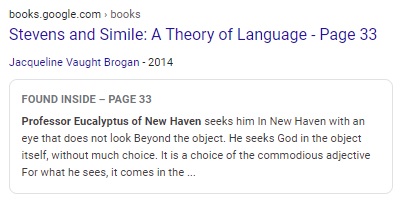Born 100 years ago today:



Other approaches to the
eight-ray star figure

have been sketched in
various Log24 entries.
See, for instance, the
June 21 entries on
the Kyoto Prize for
arts and philosophy.
Quine won this prize
in 1996.
Quine’s figure, cited in an
argument against universals,
is also a classic symbol for
the morning or evening star.
This year’s winner 
of the Kyoto Prize has
a more poetic approach
to philosophy:
“… the object sets up
a kind of frame or space or field
within which there can be epiphany.”
For one such frame or space,
a Mexican cantina, see
Shining Forth.
See also Damnation Morning and
The Devil and Wallace Stevens.
 Charles Taylor. See
Charles Taylor. See
“Epiphanies of Modernism,”
Chapter 24 of Sources of the Self
(Cambridge U. Press, 1989, p. 477)














